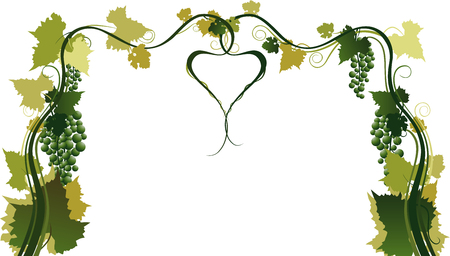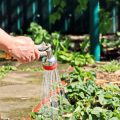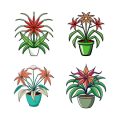Understanding Drought-Resistant Landscaping
As climate patterns shift and droughts become more frequent across many parts of the United States, especially in regions like the Southwest and California, rethinking how we design our backyards is more important than ever. Drought-resistant landscaping—sometimes called xeriscaping—offers a smart, eco-friendly approach to creating beautiful outdoor spaces that thrive with minimal water use.
Why Drought-Resistant Design Matters
Traditional lawns and gardens often require large amounts of water, fertilizers, and maintenance. In dry climates, this can quickly become unsustainable, leading to higher utility bills and strain on local water resources. By designing your backyard as a drought-resistant oasis, you’re not just saving money—you’re also supporting your local ecosystem and doing your part for water conservation.
Benefits for American Homeowners
| Benefit | Description |
|---|---|
| Water Savings | Reduces outdoor water usage by up to 60% compared to traditional lawns. |
| Lower Maintenance | Drought-tolerant plants need less mowing, fertilizing, and pest control. |
| Biodiversity Boost | Native plants attract pollinators like bees and butterflies. |
| Climate Resilience | Landscapes stay healthy during heat waves or watering restrictions. |
| Sustainability | Reduces runoff and soil erosion while supporting the environment. |
How It Supports Water Conservation and Sustainability
Drought-resistant landscaping focuses on selecting plants that naturally survive with little irrigation. Many of these choices are native to America’s arid regions, meaning they’re perfectly adapted to handle hot summers and dry spells. This approach not only cuts back on water waste but also encourages healthier soils, reduces chemical use, and creates a habitat for local wildlife—all key components of sustainable living in today’s changing climate.
Planning Your Eco-Friendly Backyard Oasis
Assessing Your Backyard’s Conditions
Before you start planting or building, take a close look at your backyard’s unique environment. Notice which areas get the most sun, where water collects after rain, and what type of soil you have. This helps you choose plants that will thrive with minimal water and care. Here are some simple steps to get started:
| What to Check | Why It Matters | How to Assess |
|---|---|---|
| Sun Exposure | Certain drought-tolerant plants need full sun, while others prefer partial shade. | Observe sunlight patterns throughout the day. |
| Soil Type | Sandy, clay, or loamy soils affect drainage and plant selection. | Do a quick soil test by squeezing damp soil in your hand. |
| Drainage | Poor drainage can lead to root rot; good drainage supports healthy roots. | After rain, see where water pools or drains quickly. |
Creating a Sustainable Layout
A well-planned layout saves water, energy, and time. Group plants with similar needs together (a technique called hydrozoning), so you don’t overwater or underwater any area. Use native plants wherever possible; they’re adapted to local climate and attract pollinators like bees and butterflies. Think about pathways for easy access, and add shaded seating areas using pergolas or trees to create comfortable spaces even during hot summer days.
Hydrozoning Made Simple
| Zone Type | Water Needs | Example Plants |
|---|---|---|
| Low-Water Zone | Minimal irrigation needed once established. | Lavender, California poppy, agave |
| Moderate-Water Zone | Occasional deep watering. | Sage, salvia, yarrow |
| No-Irrigation Zone | Relies on rainfall only. | Native grasses, succulents, wildflowers |
Selecting Resource-Efficient Hardscaping Materials
The materials you use for patios, walkways, and borders make a big difference in your yard’s sustainability. Choose permeable options like gravel, decomposed granite, or permeable pavers to let rainwater soak into the ground instead of running off. Recycled materials—such as reclaimed bricks or repurposed wood—add character while reducing your environmental impact. Here are some eco-friendly hardscape ideas:
- Permeable Pavers: Let water pass through to recharge groundwater.
- Mulch Paths: Help keep soil moist and suppress weeds naturally.
- Bioswales: Direct rainwater into planted areas for natural irrigation.
Quick Comparison of Hardscaping Materials
| Material Type | Sustainability Benefits | Main Uses |
|---|---|---|
| Gravel/Decomposed Granite | Naturally permeable and low-maintenance. | Paths, patios, driveways. |
| Recycled Brick/Wood | Keeps materials out of landfills; unique look. | Borders, edging, raised beds. |
| Mulch (Bark/Chips) | Adds nutrients back into soil as it breaks down. | Garden paths, around plant beds. |
With thoughtful planning focused on your backyard’s natural conditions and resource-saving materials, you’ll lay the groundwork for a resilient oasis that’s both beautiful and sustainable.

3. Selecting Drought-Tolerant Native Plants
Choosing the right plants is key to creating a drought-resistant backyard oasis that’s both beautiful and sustainable. By focusing on native, drought-tolerant species, you’ll save water, reduce maintenance, and support your local ecosystem. Here’s how to get started:
Why Choose Native Plants?
Native plants are adapted to your region’s climate and soil, making them naturally resilient during dry spells. They need less water, fewer chemicals, and provide food and shelter for local wildlife like bees, butterflies, and birds.
Top Drought-Resistant Native Plants by U.S. Climate Zone
Not sure which plants will thrive in your area? Use the table below to find great options based on popular U.S. climate zones:
| Climate Zone | Plant Name | Description |
|---|---|---|
| California & Southwest | California Lilac (Ceanothus) | Showy blue blooms; attracts pollinators; thrives in full sun |
| Southwest & Desert | Agave/Succulents | Striking shapes; store water in leaves; minimal care needed |
| Midwest Plains | Blue Grama Grass (Bouteloua gracilis) | Tough native grass; low water use; supports local insects |
| Southeast | Purple Coneflower (Echinacea purpurea) | Drought-hardy once established; attracts butterflies & birds |
| Northeast | New England Aster (Symphyotrichum novae-angliae) | Loves sun; bright purple flowers; supports late-season pollinators |
| Pacific Northwest | Oregon Grape (Mahonia aquifolium) | Tough evergreen shrub; yellow flowers feed early bees; berries for birds |
Sustainable Planting Tips
- Group by Water Needs: Place plants with similar moisture requirements together to make watering more efficient.
- Add Mulch: Mulch helps retain soil moisture and suppress weeds, further reducing water needs.
- Avoid Invasives: Stick to true natives or well-adapted drought-tolerant species to protect local habitats.
- Mimic Nature: Layer groundcovers, shrubs, and trees to create a self-sustaining mini-ecosystem.
Eco-Friendly Bonus!
Selecting native drought-tolerant plants not only conserves precious water but also creates a backyard haven for local wildlife. Your garden can be both a restful retreat for you and a lifeline for pollinators and birds—all while supporting a more sustainable future.
4. Smart Irrigation and Water Management
Embracing Water-Wise Solutions for Your Backyard
When it comes to creating a drought-resistant backyard oasis in the U.S., smart irrigation and responsible water management are your best friends. These sustainable techniques help conserve water, lower your bills, and keep your garden thriving, even during dry spells.
Install Drip Irrigation Systems
Drip irrigation is a game changer for eco-friendly landscaping. Instead of spraying water everywhere, drip systems deliver moisture directly to plant roots. This reduces evaporation and runoff—saving up to 50% more water than traditional sprinklers.
Key Benefits of Drip Irrigation
| Benefit | Description |
|---|---|
| Water Efficiency | Targets roots with minimal waste |
| Healthier Plants | Prevents leaf diseases from overhead watering |
| Time-Saving | Automate schedules with timers |
| Easy Installation | Kits available at local hardware stores |
Collect Rainwater for Sustainable Use
Catching rainwater is a simple way to supplement your irrigation needs—especially during rainy seasons or unexpected showers. Installing a rain barrel under your downspout lets you harvest water that would otherwise run off into the storm drain. This practice not only saves resources but also supports local ecosystems by reducing runoff pollution.
How to Start Rainwater Harvesting:
- Choose a food-grade barrel or purchase a ready-made system.
- Install a filter screen to block debris.
- Use the stored water for garden beds, container plants, or even wildlife habitats.
Use Mulch to Retain Soil Moisture
A thick layer of mulch is like a protective blanket for your soil. Organic mulches (like wood chips, straw, or shredded leaves) slow down evaporation, moderate soil temperature, and suppress weeds—all while breaking down naturally over time to enrich your soil.
Types of Mulch & Their Advantages
| Type of Mulch | Main Benefit |
|---|---|
| Bark/ Wood Chips | Long-lasting and decorative for flower beds & paths |
| Pine Needles | Lighter texture; great for acid-loving plants like blueberries |
| Straw/Grass Clippings | Cools the soil and decomposes quickly to add nutrients |
| Shredded Leaves | Easily available and excellent for veggie gardens |
Together, these smart watering strategies allow you to enjoy a lush backyard oasis while respecting local water resources—a win-win for you and the planet!
5. Maintenance for Long-Term Sustainability
Creating a drought-resistant backyard oasis is only the beginning—keeping it healthy and beautiful all year long comes down to smart, sustainable maintenance. By adopting eco-friendly habits, you can ensure your outdoor space thrives with minimal environmental impact. Here are some low-impact practices to keep your garden green and gorgeous without wasting resources.
Composting: Nourish Your Soil Naturally
Composting yard waste and kitchen scraps is a simple way to enrich your soil and reduce landfill waste. A small backyard compost bin can handle leaves, grass clippings, fruit peels, coffee grounds, and eggshells. Spread finished compost around plants to boost water retention and support healthy root systems—perfect for drought conditions.
Compostable Materials Guide
| Green Materials | Brown Materials |
|---|---|
| Fruit & veggie scraps Coffee grounds Fresh grass clippings |
Dried leaves Shredded paper Small branches |
Natural Pest Control: Support Backyard Biodiversity
Avoid chemical pesticides that harm pollinators and beneficial insects. Instead, try these earth-friendly strategies:
- Encourage good bugs: Ladybugs and lacewings naturally control aphids and other pests.
- Plant companions: Marigolds and basil deter unwanted insects while adding beauty.
- Diatomaceous earth: This natural powder helps keep crawling pests at bay.
- Neem oil spray: Safe for most plants, neem oil keeps fungal diseases in check.
Seasonal Care for Year-Round Success
Your drought-resistant oasis needs different care as seasons change. Here’s a quick overview of what to focus on throughout the year:
| Season | Main Tasks |
|---|---|
| Spring | Add mulch, compost soil, plant new drought-tolerant varieties |
| Summer | Water deeply but infrequently, check for pests, deadhead spent blooms |
| Fall | Add leaf mulch, prune as needed, collect seeds from native plants |
| Winter | Protect sensitive plants with covers or straw mulch, clean up debris but leave some for overwintering insects |
Irrigation Tips: Water Wisely
The right watering schedule makes all the difference in a drought-resistant garden. Use drip irrigation or soaker hoses to deliver water straight to the roots where its needed most. Water early in the morning to reduce evaporation and encourage deep root growth.
Sustainable Maintenance Checklist
- Add fresh compost every season
- Mow high and leave grass clippings on the lawn (grasscycling)
- Select organic mulches like bark or wood chips
- Spot-treat pests with homemade remedies before reaching for store-bought sprays
- Rotate annual flowers and veggies to maintain soil health
Sustainable maintenance is all about working with nature—supporting healthy soil, inviting helpful critters, and adjusting care routines with the seasons. Your backyard oasis will thank you with vibrant growth and lasting beauty!
6. Community and Wildlife Benefits
Transforming your backyard into a drought-resistant oasis does more than just save water—it turns your outdoor space into a thriving hub for local wildlife and supports a healthy, sustainable neighborhood. By choosing native plants and eco-friendly landscaping methods, you provide vital habitat for pollinators like bees, butterflies, and hummingbirds that are essential to our ecosystem.
Supporting Native Pollinators
Many drought-tolerant plants are native to the U.S. and have evolved alongside local pollinators. Adding these species to your yard means offering food, shelter, and nesting spots for beneficial insects and birds. This not only helps maintain biodiversity but also boosts the productivity of nearby vegetable gardens and fruit trees by supporting natural pollination.
| Drought-Resistant Plant | Pollinator Attracted | Wildlife Benefit |
|---|---|---|
| California Poppy | Bees, Butterflies | Nectar source, seed food for birds |
| Milkweed | Monarch Butterflies | Caterpillar host plant |
| Sage (Salvia) | Hummingbirds, Bees | Shelter and nectar supply |
| Blanket Flower (Gaillardia) | Bees, Butterflies | Pollen and nectar source |
| Lavender | Bees, Moths | Aromatic shelter, nectar-rich blooms |
Neighborhood Inspiration: Becoming a Sustainability Role Model
Your drought-resistant landscape can inspire others in your community to adopt more sustainable habits. When neighbors see how beautiful and lively your eco-friendly backyard is—filled with color, buzzing with bees, and visited by songbirds—they may be encouraged to try similar practices. Hosting a garden tour or sharing tips on social media can help spread awareness about water conservation and habitat restoration right where you live.
Easy Ways to Share Your Sustainable Oasis:
- Host pollinator workshops or garden tours for local families and schools.
- Create educational signs about native plants and wildlife benefits in your yard.
- Join or start a neighborhood gardening group focused on drought-resilient landscaping.
- Share photos and tips on community forums or social media groups.
The Ripple Effect of Greener Choices
Every sustainable change you make at home contributes to a larger movement toward resilient communities. By planting with purpose and caring for wildlife, you help build a greener future—for your family, your neighbors, and the planet we all share.


